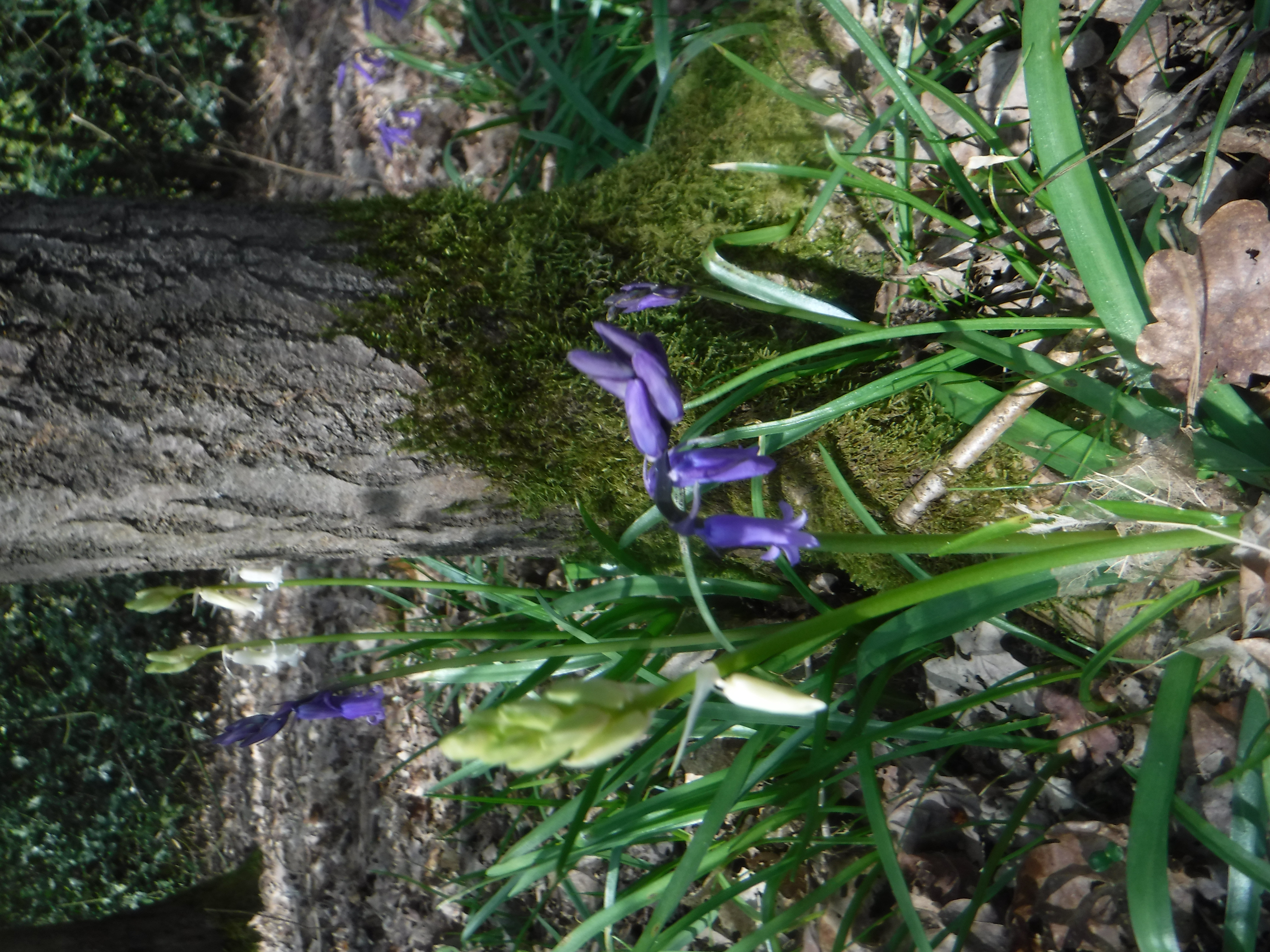
Total monthly rainfall: 3.5 millimetres, maximum daily rainfall: 3 millimetres (11th April).
Rain fell on two days of the month and there were 11 days with 100% cloud cover for at least part of the day.
Maximum temperature on the warmest days was 16°C on the 20th and 24th. Maximum temperature on the coldest day was 8°C on the 7th April.
Winds blew from a north-easterly or north-westerly direction for 24 days of the month, and there were 7 days when we had an overnight grass frost and a further 6 with a strong wind-chill.
The unusually cold April weather restricted our new wildflower sightings to only three this month, these being yellow archangel on the 10th, greater stitchwort on the 13th, and wood anemone on the 27th. Together with the 17 species seen so far in the previous months of the year, which brings our total to 20 for the year so far. In addition, the white version of our English bluebells first began to open on April 25th.
-
 Brown rust algae on woodland tree
Brown rust algae on woodland tree
Brown rust algae on woodland tree
Brown rust algae on woodland tree
-
 Crab apple blossom
Crab apple blossom
Crab apple blossom
Crab apple blossom
-
 Duck egg eaten by a crow
Duck egg eaten by a crow
Duck egg eaten by a crow
Duck egg eaten by a crow
-
 The old oak and poplar end of April
The old oak and poplar end of April
The old oak and poplar end of April
The old oak and poplar end of April
-
 White English bluebell
White English bluebell
White English bluebell
White English bluebell
https://www.kentfieldclub.org.uk/news/little-barton-farm-wildlife-notes/nature-notes-april-2021#sigProId4820f19bbb
Six species of butterfly were seen this month, although in small numbers. A small tortoiseshell appeared on our gravel drive on a sunny April 4th, followed by a gap of thirteen days before a cluster of sightings beginning with a speckled wood in sunshine beside our back woodland pond. The 18th produced an orange tip in the woodland ride. On the 19th we spotted a comma on a sunny tree trunk by the woodland edge – the third day running that the temperature reached 14°C. The 20th (warmest day of the month) gave us a green-veined white among the garden wildflowers, while we found a holly blue on some damp mud in a dried-up drainage ditch on the 23rd.
Moths did not fare so well, with an orange moth found dead indoors to light two months early so indoor-bred – and almost certainly trapped by a spider on April 1st. A three-week gap then followed until Susan spotted our first green-oak tortrix moth caterpillar dangling from a hornbeam on April 22nd. No further caterpillars were found this month, which does not bode well for the blue-tits who feed them to their chicks.
Other insects first seen during the month include a white-tailed bumblebee on white deadnettle (8th April); queen wasp indoors and pond skater on our back woodland pond (20th April); the crane-fly Tipula maxima among soft rush at the back woodland pond (23rd April); lesser diving beetle at the back woodland pond, and a large red damselfly on marsh marigold in the small garden pond on the 29th April.
Information on wild birds is as follows: The female Canada goose went broody on our largest island on April 7th. We heard the chiffchaff in the wood on the 14th, and saw the first swallow on the telephone cable on the 18th – rather late arriving, and all by itself. Our first cuckoo was heard on the 24th (also rather late), bringing our running total to 24 birds for the year so far. For most of the month, duck eggs were eaten by crows almost daily, and on the 28th and 29th wood pigeon eggs were also taken.
Other creatures spotted during the month were a fox in the wood (flushed out by the family dogs on the 3rd).
Our first mole-hill of the year was found on the garden lawn on the 7th. We found a small toad beneath a reptile shelter on the 8th, and a baby slow-worm under another shelter on the 17th April. Finally, we found a large number of frog tadpoles in the shallows around the lake on the 23rd, having missed their frogspawn earlier (presumably hidden deeply among rushes to protect against the April frosts).
Among the trees and shrubs, buds began to open on the silver birch on April 2nd, on goat willow (April 9th), on the oaks by the 26th, and on beech by the 28th. Field maple and silver birch leaves started showing on the 4th, followed by dog rose on the 6th, horse chestnut on the 11th, and wild cherry on the 24th. Hornbeam showed full spring-green leaf on April 8th. Finally crab apple showed pink blossom on the 28th.
Some of the woodland trees have suffered from a tree rust this year which looks rather unsightly but, according to the Woodland Trust website is caused by harmless algae usually on the north side of some trees during winter.

